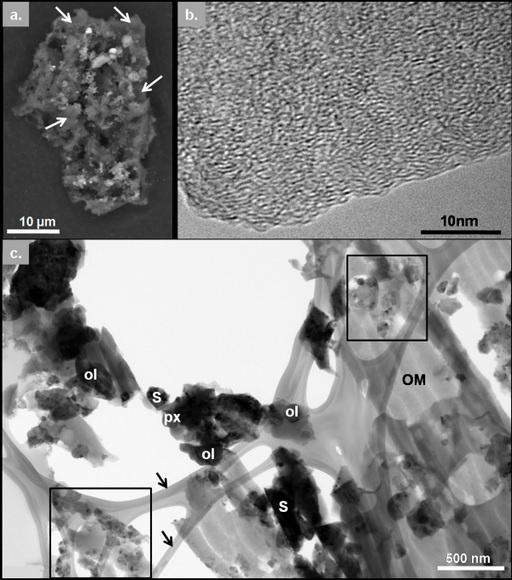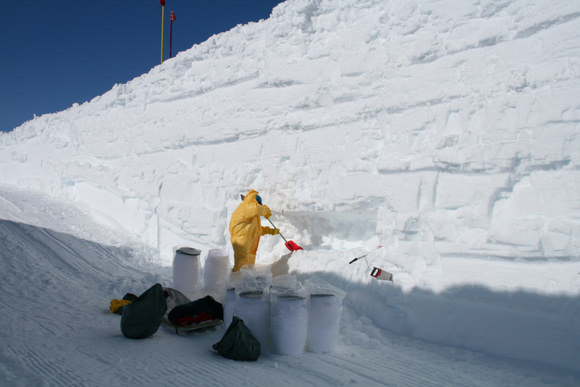[/caption]
Researchers sifting through the pristine, cold snow in Antarctica have found micrometeorites that contain a bit of a surprise. The two micrometeorites, known as particles 19 and 119, contain extremely large amounts of carbon as well as excesses of deuterium. While this high organic content usually comes from distant interstellar space where molecular clouds gather to form new stars, other clues say these space rocks likely formed in our own solar system. This contradicts long-held notions that that all organic matter with extreme deuterium excesses have interstellar origins. Additionally, the meteorites could provide information about the protplanetary disk that formed our solar system.

Jean Duprat and colleagues working at the CONCORDIA polar station located in central Antarctica recovered the two micrometeorites from 40 to 55 year-old snow. In investigating their make-up to determine where they came from, the researchers identified crystalline materials embedded in particles 19 and 119 that indicate that they formed close to our sun, and much more recently than predicted.
Their findings imply that these well-preserved micrometeorites contain a record of the cold regions of our sun’s ancient proto-planetary disk, which eventually led to the formation of our solar system.
More studies of these and other meteorites could possibly reveal details of the first deliveries of organic materials to the primitive Earth.
The findings have been published in this week’s edition of Science.

